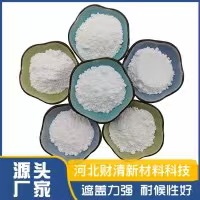
7 月 . 29, 2024 18:23 Back to list
Wholesale TiO2 for Concrete Applications Enhancing Durability and Aesthetic Qualities in Construction Materials
The Role of Wholesale TiO2 in Concrete Applications
In the construction industry, the quest for enhancing the quality and durability of concrete has led to the incorporation of various additives and materials. One such material that has gained significant attention is titanium dioxide (TiO2). Known for its unique properties, TiO2 is heralded for its photocatalytic activity, which can lead to improved sustainability in construction practices. This article delves into the benefits of wholesale TiO2 in concrete applications, shedding light on its diverse roles and potential advantages.
What is TiO2 and Why is it Important?
Titanium dioxide is a naturally occurring oxide of titanium. It is commonly used in various industries due to its high refractive index and excellent resistance to discoloration. TiO2 is predominantly recognized for its use as a pigment in paints, coatings, and plastics, thanks to its brilliant whiteness and opacity. However, its application in concrete is becoming increasingly popular, especially in the quest for eco-friendly construction materials.
Photocatalytic Properties
One of the most remarkable features of TiO2 is its photocatalytic property. When exposed to ultraviolet (UV) light, TiO2 can catalyze reactions that break down organic pollutants and harmful compounds, converting them into inert substances. When mixed into concrete, this property allows for the development of self-cleaning surfaces. Buildings and structures adorned with TiO2-containing concrete can significantly reduce the buildup of dirt and stains. This characteristic not only extends the lifecycle of the material but also decreases the need for chemical cleaners and maintenance, aligning with sustainable practices.
Enhancing Durability
wholesale tio2 concrete

Incorporating TiO2 into concrete has been shown to improve the material’s overall durability. The presence of TiO2 can contribute to reducing the permeability of concrete, enhancing its resistance to water and chemical attacks. This characteristic is particularly important in regions with high exposure to moisture and corrosive substances, which can compromise concrete integrity over time. The addition of TiO2 can also minimize the risk of efflorescence, which can lead to aesthetic degradation and structural weakness.
Aesthetic Benefits
The aesthetic appeal of concrete can also be significantly enhanced by using TiO2. It imparts a bright, vibrant color, making it an excellent choice for decorative applications. Furthermore, the self-cleaning property ensures that the surfaces maintain their appearance for extended periods, which is particularly advantageous for public structures where visual appeal is paramount.
Environmental Impact
The environmental benefits of using TiO2 in concrete applications cannot be overlooked. By fostering self-cleaning surfaces, TiO2 reduces the need for frequent cleaning, which often involves the use of water and harsh chemicals that can harm the environment. Moreover, its capability to decompose pollutants contributes to cleaner urban air, aiding in the reduction of the urban heat island effect and improving community health. This feature is especially vital in densely populated areas where air quality is paramount.
Conclusion
Wholesale TiO2 presents a transformative opportunity in concrete applications, enhancing its performance, aesthetics, and environmental footprint. As the construction industry continues to seek sustainable solutions, the integration of TiO2 not only addresses pressing challenges but also paves the way for innovative products that cater to modern societal needs. With ongoing research and development, the future looks promising for TiO2 in concrete, setting a precedent for sustainable construction practices that prioritize longevity and eco-friendliness. The adoption of this technology may very well lead to a revolution in how we approach building materials and their impact on our environment.
-
Lithopone for Plastic & TiO2 R-5568/SK-6658 Masterbatch Solutions
NewsMay.30,2025
-
China Leading Rutile TiO2 Manufacturer - R5566 & R996 Grades Available
NewsMay.30,2025
-
High-Purity Anatase & Rutile TiO2 Powder Trusted Manufacturer
NewsMay.30,2025
-
High-Purity Anatase Products Trusted Supplier & Manufacturer
NewsMay.29,2025
-
Best Price Eco-Friendly Rutile TiO2 Supplier & Wholesale Factory
NewsMay.29,2025
-
Chinese Anatase Titanium Dioxide for Ceramic Glaze Reliable Supplier
NewsMay.29,2025
